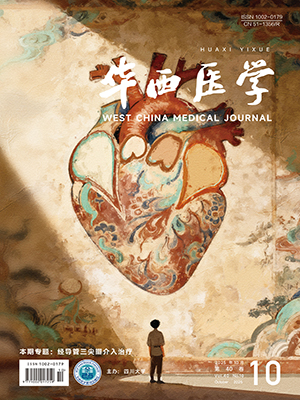| 1. |
Calderwood MS, Anderson DJ, Bratzler DW, et al. Strategies to prevent surgical site infections in acute-care hospitals: 2022 update. Infect Control Hosp Epidemiol, 2023, 44(5): 695-720.
|
| 2. |
Molla M, Temesgen K, Seyoum T, et al. Surgical site infection and associated factors among women underwent cesarean delivery in Debretabor General Hospital, Northwest Ethiopia: hospital based cross sectional study. BMC Pregnancy Childbirth, 2019, 19(1): 317.
|
| 3. |
Guo L, Huang S, Sui H, et al. Incidence and influencing factors for surgical site infections after cesarean section in China: a systematic review and meta-analysis. J Obstet Gynaecol Res, 2025, 51(1): e16172.
|
| 4. |
Bizuayew H, Abebe H, Mullu G, et al. Post-cesarean section surgical site infection and associated factors in East Gojjam zone primary hospitals, Amhara region, North West Ethiopia, 2020. PLoS One, 2021, 16(12): e0261951.
|
| 5. |
中国研究型医院学会糖尿病学专业委员会. 中国妊娠期糖尿病母儿共同管理指南(2024 版). 中华糖尿病杂志, 2024, 16(12): 1324-1345.
|
| 6. |
刘善善, 张娜, 孙佳璐, 等. 夯实围术期感染防控,保障手术质量安全. 中华医院感染学杂志, 2024, 34(23): 3521-3525.
|
| 7. |
冯春月, 晁乐研, 李晓莉, 等. 根因分析法在电外科手术器械及设备安全管理中的应用效果. 中华现代护理杂志, 2022, 28(10): 1355-1359.
|
| 8. |
Wang Q, Cao M, Tao H, et al. Evidence-based guideline for the prevention and management of perioperative infection. J Evid-Based Med, 2023, 16(1): 50-67.
|
| 9. |
Wenzel RP. Surgical site infections and the microbiome: an updated perspective. Infect Control Hosp Epidemiol, 2019, 40(5): 590-596.
|
| 10. |
Miller JM, Binnicker MJ, Campbell S, et al. A guide to utilization of the microbiology laboratory for diagnosis of infectious diseases: 2018 update by the Infectious Diseases Society of America and the American Society for Microbiology. Clin Infect Dis, 2018, 67(6): e1-e94.
|
| 11. |
国家产科专业医疗质量控制中心, 中华医学会围产医学分会. 剖宫产手术专家共识(2023). 中华妇产科杂志, 2024, 59(1): 14-21.
|
| 12. |
中华医学会妇产科学分会产科学组. 剖宫产手术的专家共识(2014). 中华妇产科杂志, 2014, 49(10): 721-724.
|
| 13. |
Haas DM, Morgan S, Contreras K, et al. Vaginal preparation with antiseptic solution before cesarean section for preventing postoperative infections. Cochrane Database Syst Rev, 2020, 4(4): CD007892.
|
| 14. |
中华医学会围产医学分会, 中国医师协会妇产科医师分会, 中华医学会妇产科学分会产科学组. 复杂剖宫产手术专家共识(2024). 中华妇产科杂志, 2025, 60(1): 3-10.
|
| 15. |
张敏, 李萨珏, 张桂沙, 等. 基于多维管理工具的医疗质量安全不良事件管理体系构建. 中国医院管理, 2022, 42(4): 53-56.
|
| 16. |
金小芳, 李芸, 张燕红, 等. 失效模式分析联合根因分析法在住院患者特殊检查流程中的应用价值. 国际护理学杂志, 2023, 42(21): 3920-3923.
|
| 17. |
Carter SWD, Neubronner S, Su LL, et al. Chorioamnionitis: an update on diagnostic evaluation. Biomedicines, 2023, 11(11): 2922.
|
| 18. |
曹明楠, 王乔宇, 陶骅, 等. 《中国围手术期感染预防与管理指南》解读. 临床药物治疗杂志, 2023, 21(6): 19-25.
|
| 19. |
常亚平. 回顾性分析比较不同临床标本微生物检验的阳性率. 中国实用医药, 2021, 16(8): 210-212.
|
| 20. |
史继静, 赵靓, 李晓亮, 等. 基于宏基因组学第二代测序技术分析烧伤脓毒症患者感染病原体的特征. 中华烧伤与创面修复杂志, 2024, 40(10): 940-947.
|




